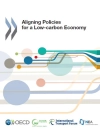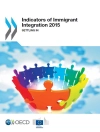The SAGE Handbook of Intercultural Communication offers a global, interdisciplinary, and contextual approach to understanding the complexities of intercultural communication in our diverse and interconnected world. The handbook brings together established theories, methodologies, and practices and provides a comprehensive exploration of intercultural communication in response to the challenges and opportunities presented by our global society.
Featuring contributions from leading and emerging scholars across multiple disciplines, including communication studies, psychology, applied linguistics, sociology, education, and business, this handbook covers research spanning geographical locations across Europe, Africa, Oceania, North America, South America, and the Asia Pacific. It focuses on specific contexts such as the workplace, education, family, media, crisis, and intergroup interactions. Each chapter takes a contextual approach to examine theories and applications, providing insights into the dynamic interplay between culture, communication, and society.
From managing cultural diversity in the workplace to creating culturally inclusive learning environments in educational settings, from navigating intercultural relationships within families to understanding the role of media in shaping cultural perceptions, this handbook delves into diverse topics with depth and breadth. It addresses contemporary issues such as hate speech, environmental communication, and communication strategies in times of crisis. It also offers theoretical insights and practical recommendations for researchers, practitioners, policymakers, educators, and students.
The handbook is structured into seven parts, beginning with the theoretical and methodological development of the field before delving into specific contexts of intercultural communication. Each part provides a rich exploration of key themes, supported by cutting-edge research and innovative approaches. With its state-of-the-art content and forward-looking perspectives, this SAGE Handbook of Intercultural Communication serves as an indispensable resource for understanding and navigating the complexities of intercultural communication in our increasingly interconnected world.
Part 1: Theoretical and methodological development of the field
Part 2: Intercultural communication in workplace contexts
Part 3: Intercultural communication in educational contexts
Part 4: Intercultural communication in family contexts
Part 5: Intercultural Communication in media contexts
Part 6: Intercultural communication in crisis contexts
Part 7: Intercultural communication in intergroup contexts
สารบัญ
Introduction: Intercultural communication in contexts – Shuang Liu, Adam Komisarof, Zhu Hua, and Levi Obijiofor
Part 1: Theoretical and methodological development of the field
Chapter 1: The Developmental Model of Intercultural Sensitivity for Experiencing Otherness – Milton J. Bennett
Chapter 2: The politics of researching interculturally – Prue Holmes
Chapter 3: Individual’s psychology and society’s culture – Plamen Akaliyski, Vivian Vignoles, and Michael Minkov
Chapter 4: Historical Developments, trends, and trajectories of the intercultural field(s) – Steve Kulich and Rongtian Tong
Chapter 5: An Overview of Intercultural Philosophy – Richard Evanoff
Chapter 6: Communicating Across the Divide of Ethnic and Civic National Identities – Adam Komisarof
Part 2: Intercultural communication in workplace contexts
Chapter 7: Diversity perspectives and intercultural communication in the workplace – Joep Hofhuis and Jana Vietze
Chapter 8: Theories and practices for diversity management at work – Stacey L. Connaughton and Nicholas B. Lacy
Chapter 9: Universality and indigeneity in Chinese organizational leadership communication research – Vivian Sheer and Jiamin Xie
Chapter 10: Updating theory and practice for cross-cultural adjustment of global workers – Heidi Wechtler and Eun Su Lee
Chapter 11: Researching language and culture in the workplace from a sociolinguistic perspective – Janet Holmes, Bernadette Vine, and Meredith Marra
Part 3: Intercultural communication in educational contexts
Chapter 12: Intercultural teacher training and diversity in schools – Ken Cushner
Chapter 13: Intercultural communication in English language education in postcolonial Bangladesh – M. Moninoor Roshid, M. Obaidul Hamid, and Shaila Sultana
Chapter 14: Teaching intercultural competence in higher education – Lily Arasaratnam-Smith
Chapter 15: Language learning and intercultural communication – Zhu Hua
Chapter 16: Internationalisation of higher education across cultures – Levi Obijiofor
Part 4: Intercultural communication in family contexts
Chapter 17: Cultural and intercultural perspectives on love – Claude-Helene Mayer
Chapter 18: Ageing in a foreign land and cultural change in family care – Shuang Liu
Chapter 19: Third culture kids and perspectives on communication and relating in a global world – Raquel C. Hoersting and Rafael Baliardo
Chapter 20: The dynamics of intergenerational communication in intercultural families – Jieun Kiaer
Chapter 21: Growing up Muslim in the West and challenges of negotiating multiple identities – Jaimee Stuart
Part 5: Intercultural Communication in Media Contexts
Chapter 22: Media’s Impact on Refugee Perspectives of Belonging in Australia – Mairead Mac Kinnon
Chapter 23: How Intercultural Communication Influences Pacific Media Models – David Robie
Chapter 24: Accounting for race in journalism education – Marie M’Balla-Ndi Oelgemoeller
Chapter 25: Sustaining Journalism in Uncertain Times in the Small and Micro Media Systems of the Pacific Islands – Shailendra Singh
Part 6: Intercultural communication in crisis contexts
Chapter 26: Restorative justice and seeking forgiveness in intercultural conflicts – Deborah A. Cai and Edward L. Fink
Chapter 27: Hate Discourse as Mirror of Cultural Conflict and Political Disruption – Edward Dunbar
Chapter 28: A communication ecology approach to intercultural relations in the Covid-19 crisis communication – Zhipeng Gao
Chapter 29: Climate crisis communication across Oceania – Robyn Gulliver
Chapter 30: Populist communication strategies in intergroup relations – Elena Block
Part 7: Intercultural communication in intergroup contexts
Chapter 31: Racial/ethnic identities and intercultural communication – Thomas Nakayam and Judith Martin
Chapter 32: The pursuit of interfaith dialogue – L. Ripley Smith
Chapter 33: Intercultural and Intergroup Communication Dynamics in Policing – Howard Giles, Edward R. Maguire, and Shawn L. Hill
Chapter 34: Evolving provider-patient intergroup roles – Rachyl Pines and Barbette Weimer-Elder
Chapter 35: Building Relationships with People Living with Dementia Through Innovative Communication Strategies – Nancy A. Pachana and Carly Meyer
Conclusion: Future directions for intercultural communication in contexts – Shuang Liu, Adam Komisarof, Zhu Hua, and Levi Obijiofor
เกี่ยวกับผู้แต่ง
Levi Obijiofor is an Associate Professor of Journalism in the School of Communication and Arts at University of Queensland. He is an expert in comparative journalism examining journalistic practices in Western and non-Western contexts. This has led to international recognition of his contributions to the field. He is a leading scholar in Development Communication. His work provides fresh, innovative, and practical insights into emerging issues in the field. His publications include numerous peer-reviewed journal articles, book chapters, and three monographs. He undertakes regular research consultancies for international organisations such as UNESCO, Open Professional School (New York), and the UNDP.












